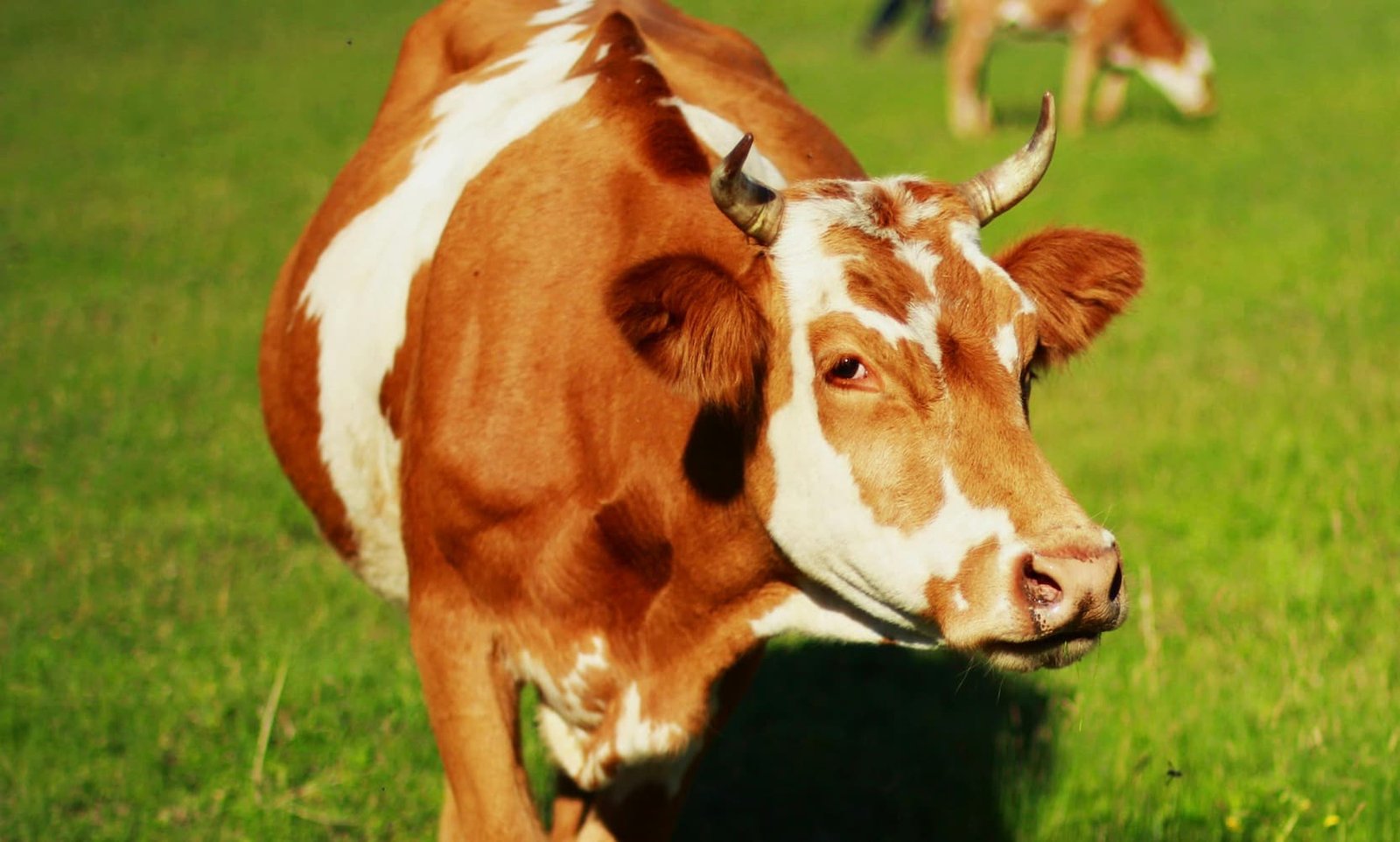Hypomagnesemia in Cattle
Hypomagnesemia in Cattle is a complex metabolic disturbance by reduced concentration of magnesium (Mg) in blood and CSF, which lead to hyper-excitability, muscular spasms, convulsions, respiratory distress, collapse, and death.

Hypomagnesemia in cattle is also known as Lactation Tetany.
Magnesium Homeostasis
Magnesium homeostasis is regulated by kidney but influenced by these factors:
Diet
- Normally magnesium absorption occurs mostly in for stomach and little in Abomasum and small intestine. In sheep Mg absorption is in large intestine. With increasing age there will be reduction in the absorption of Mg form gut, which may develop hypomagnesemia.
Renal Excretion
- Kidney is the major organ for Mg homeostasis.
- Mg freely filtrated through glomerulus and reabsorbed by renal tubules.
- If low level of Mg in the body it will maintained by activation of PTH and reabsorption takes place in the renal tubules. This reabsorption take place if the Mg level is goes down <1.8 mg/dl.
- Mg is excreted through urine. The serum concentration of Mg is decrease, reduction in the urine Mg also noticed. Hence, estimation of urine Mg concentration is very much use full in the diagnosis of hypomagnesemia.
Magnesium reserve in bones
- Mostly Mg+ is stored in the bone and smooth muscle.
- In young calf have high Mg+ reserve than adult.
- Mobilisation of Mg is decreases with increasing age of the animal.
- Peak lactation requirement of Mg+ is meet out form absorption from gut and Mg homeostasis.
Disease susceptibility Factors
- Mature dairy cattle (4–7 years) in early lactation, especially at the first 2 months of lactation.
- Calf: 2-4 month old calves exclusively fed with milk only; younger calves with chronic scours while being fed milk replacer; and those calves fed with milk alone, the magnesium absorption efficiency falls from 87% at 2-3 weeks to 32% at 7-8 weeks of age.
- Breed: Friesian cow most affected.
- Winter/cool weather condition.
- Nitrogenous fertilizer used in pastures is more susceptible because increased concentration of nitrogen content in the pasture increases crude protein level in the rumen, which will produce an excess amount of ammonia from rumen microbial fermentation. Excess ammonia in the rumen suppresses the Mg absorption from the foregut.
- Feeding of wheat (cereal) pasture during lactation. Wheat is a rich source of potassium, which will suppress the Mg absorption.
- Young rapidly growing grass is low in Na+ and high in K+, leading to Na+ deficiency. Impaired Na:K ratio in rumen fluid significantly depressed the Mg absorption.
- Feeding with high concentration of K+ and low Na+ diet.
- Reduced intake of dry matter and fiber content
- Starvation due to stress, poor weather condition and prolonged transportation.
- Chronic diarrhea leads to decreases Mg absorption from the rumen.
- Chronic subclinical hypomagnesemia is predisposing to milk fever and downer cow in lactating cows during peak lactation. Chronic hypomagnesemia affects the Ca+ homeostasis. Hypomagnesemia directly reduces the production of PTH and reduces the hydroxylation of Vitamin D. Because Mg+ possesses an antagonistic effect against Ca+.
Pathogenesis
- Magnesium is very important for impulse transmission at the neuromuscular junction. (Mg needed for the release of ach, sensitivity of motor end plate, threshold of the membrane, and activation of the cholinesterase system).
- Hypomagnesemia causes the titanic signs.
- Hypomagnesemia, also concurrent with hypocalcemia, decreases the ratio of Ca:Mg and stimulates Ach secretions, which lead to hyperaesthesia, tetany of muscle, and recumbency. Clinical signs and severity of disease are more severe in concurrent deficiency than Hypo Mg alone.
- Magnesium level is usually decreased in CSF during hypomagnesemia.
Clinical Signs
Acute Hypomagnesemia
- Sudden deprivation of grazing
- Unusual alertness: Animal will try to attack even with slight disturbance.
- Animal felt uncomfortable
- Twitching of the muscle and ears
- Severe hyperesthesia
- Continuous bellowing
- Frenzied and galloping
- Staggering gait
- Tetany of limbs
- High raise of temperature (40-40.5 C)
- Increased pulse and respiratory rate
- Increased intensity of heart sound heard without stethoscope, even from the distance.
- Death usually occurs within 0.5-1 hr, if not treated
- Response will be good, if started appropriate therapy.
Clonic convulsion for few second and may relapse after few seconds. During the convulsion following signs may appear:
- Opisthotonus
- Nystagmus
- Champing of jaws
- Frothy mouth
- Pricking of ears
- Retraction of eyelids
Sub-acute Hypomagnesemia
- Onset of disease is gradual- over a period of 3-4 days
- Wildness of the facial expression
- Exaggerated limb movement
- Head pressing
- Spasmodic urination
- Frequent defecation
- Slight inappetence, reduced ruminal motility and reduction in the milk production
- Muscle tremor and mild Tetany of hind limb
- Sodden movement, noise, pricking with needle may precipitate violent convulsion.
Chronic Hypomagnesemia
- No predominant clinical signs
- Signs are vague like, dullness, unthirftness, and variable appetite.
- Dairy animals may develop paresis and milk fever like symptoms and poor response to calcium therapy.
Diagnosis
Diagnosed based on the estimation of magnesium level in the serum, urine and CSF.
Low serum magnesium level
- Cattle
- Normal: 1.7 to 3 mg/dL (0.70-1.23 mmol/L)
- Sub-clinical: 1 to 2 mg/dL (0.41-0.82 mmol/L) (Risk for Tetany)
- Clinical: < 0.5mg/dL (0.21 mmol/L)
- Sheep
- Clinical Tetany: < 0.5mg/dl (0.21mmol/L)
Low CSF magnesium level
- It is the presumptive diagnosis for hypomagnesemia.
- CSF can be collected up to 12 hours even after death of the animal for the diagnosis.
- Normal magnesium level in CSF: 2 mg/dL (0.80 mmol/L)
- Abnormal magnesium level in CSF: < 1.25 mg/dL (0.51 mmol/L) (Tetanic signs)
Low Urine magnesium level
- Estimation of urine Mg+ is also a presumptive diagnostic method for hypomagnesemia.
- Usually reduction in the serum Mg+ concentration is with a marked fall in the excretion of Mg+ in urine. Hence, the estimation of urine Mg+ level is very useful.
Low vitreous humor magnesium level
- Magnesium level remain stable in vitreous humor even 12 hours.
- Normal level: 1.8 mg/L
- In case of Hypomagnesemia: < 1.4 mg/dl
Other diagnostics used:
- Low serum Ca+ may be noticed with concurrent hypomagnesemia.
- Elevated serum AST and CPK level – muscle injury
- No specific PM lesions in cattle.
- In calves the estimation of the magnesium in bone (particularly ribs and vertebrae) is a reliable confirmatory test at necropsy. The ratio of Ca:Mg is above 90:1 are indicative of severe magnesium depletion. In the normal calf the ratio is about 55:1. Absolute bone calcium values are not decreased and are often slightly elevated.
Differential Diagnosis
- Acute lead poisoning
- Rabies
- Nervous form of Ketosis
- BSE
- Hypocalcemia
- In Calf: Tetanus, PEM and ET
Treatment
Intravenous chloral hydrate is used to reduce convulsions.
Combination of calcium and magnesium therapy: It is the safest and general recommendation is to use a Calcium Magnesium preparation IV (Cattle @ 500ml of solution contains 25% calcium borogluconate and 5% magnesium hypophosphate & Sheep @ 50ml) followed by SC administration of magnesium salts.
Magnesium therapy: 20% MgSO4 @ 200-300 ml IV followed by after 3-6 hrs 50% MgSO4 @ 200ml SC. IV MgSO4 cause cardiac dysrrthymia or mental depression followed by respiratory failure. If any adverse reaction noticed, stop IV administration. If necessary IV calcium may be administered.
Alternate to MgSO4, Magnesium lactate @ 3.3% can be used through IV or SC. MgCl2 enema @30g in 100ml water. This will raise Mg level within 10 minutes after administration.
Hypomagnesemic calves: 10% MgSO4 @100 ml SC followed by 10 g Magnesium oxide PO SID.
Prevention
- Avoid grazing in high risk pasture.
- Provision of adequate amount of Magnesium in diet at 3g/kg DM.
- Adding Mg salt supplement in water and feed (like MgSO4, Magnesium carbonate and Magnesium oxide).
- Spraying Magnesium rich fertilizer as on top dressing.
- Low nitrogen/ potassium content fertilizer to the field.
- Add Magnesium oxide at 60 g/day/cow & for sheep at 7 g/day/sheep.
- Prevention of hypomagnesemia in calves: Provision of good quality legume hay and a starter ration from 2 week of age prevents the disorder.

